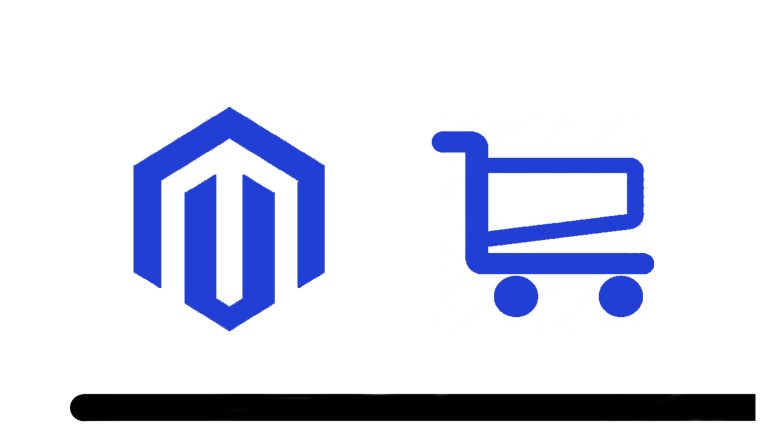So now you’ve assessed all strengths and weaknesses of dozens of e-commerce platforms out there and decided that Magento 2 is the one you will start building your online business on. Or, maybe, you need that last piece of information to finalise your decision and prepare for your next steps.
This article will help you understand what goes into setting up a new Magento store from scratch, and what you should expect from your developers over those several weeks following a “Go!” from you.
The assumption for this part will be that you do not have the design or content for your store yet. If you do – feel free to skip to the next point.
Design Stage

You may have decided not to go with one of many ready-made themes for Magento widely available to purchase or get for free. And the reasons for that are strong: one-fit-all Magento themes extremely rarely perform well in terms of speed, stability during core upgrades, and compatibility with Magento extensions. They could also be a pain to modify to fit your brand, and may potentially end up more costly in maintenance.
Before you commission a designer to create extraordinary visuals for your store, you need to make sure they understand that their creative flexibility is limited by what Magento 2 has to offer, and how much you are ready to spend to make sure their vision is eventually implemented.
A good way to go from here is asking them to take a look at a “blank” Magento store: DEMO
It is recommended that they use it as a wireframe for their designs.
While Home Page can be fully customised with as many bells and whistles as your marketing team and designers want, the Category (Catalog) page and Product Page, Cart and Checkout Pages content needs to remain relatively close to Magento basics, otherwise costs for implementing them may get far out of proportion. If Magento doesn’t have this “vote” button, and your business doesn’t really need it – then it shouldn’t be on the designs.
Ask the designers to click through the Demo and pay extra attention to:
- Category Page
- Product Page
- areas within user account settings when they’re logged in
- Cart
- Checkout
- perhaps, also, Login and Signup pages
Don’t forget that your future customers will come in browsing from many different devices, so you may want to make sure the store is equally convenient on all possible screen sizes. The most popular desktop screen size, according to Google, is 1366 x 768 px, but with more than 60% of online users browsing on mobile devices you may also want to have 414 x 736 px (iPhone 7) mockups ready.
Although this is advisable to have full designs for all standard pages prepared before the development phase starts, it isn’t always necessary. Only having visuals for Home page and a Style Guide, describing a set of rules to apply across the site (such as which colors, typefaces, button types, icon sets and other elements) will suffice to build your new store like a LEGO castle.
So, to sum up, your designers need to deliver:
- PSD or Sketch files of a Home page (Desktop 1366 x 768 px; Mobile 414 x 736 px with slide-out menu for categories)
- PSD or Sketch files of any other pages / pop-ups you’re ready to commission – each page as a separate file
- an informational Style Guide (PSD / PDF / Sketch or any other adequate format, for that matter)
Preparation Stage

Now you have your designs ready and you’re enthusiastic to start the development, but what next? What to expect from your freelancers or the agency you’ve chosen, to make sure your e-store is delivered on time and on budget?
Whether you’re dealing with a freelancer or an agency, what is absolutely crucial is to have a correct and healthy development environment set up.
If you already have a hosting and domain purchased – great, but make sure your servers run a version of PHP compatible with Magento. More about system requirements you can find on Magento site here.
If you don’t have it – not a big deal. A good agency will normally offer you to host your site on their servers for the time of the development, or even forever – if you’ll keep using them for maintenance.
Your team needs to have a project management software, such as JIRA or Trello, where the different implementation stages will be split into individual tasks and combined into separate Sprints. The developers will take their tasks from there, communicate and collaborate on each individual task, and provide automatic status updates on where in the workflow each of their tasks stands. How is this going to be automatic? That’s how:
This system needs to be connected to a repository, such as Bitbucket or Gitlab, and it is essentially where all the code associated with your store will be. The developers will commit their updates for further quality review and approval by their team members, and only after their updates are approved – they can be merged with the rest of the store, and will appear on your test site.
The test site, or as the developers call it, Staging Site – is a work-in-progress version of your online store, hidden from public (and our overlord Google) but available to you and your team to play with. The automatic testing and delivery of the code to this site is ensured by Continuous Integration (CI) and secured by such tools as Bamboo or Jenkins.
There need to be the backups set up, so if something goes wrong, everything can be rolled back to normal with a click of a button.
To sum up, the deliverable for a prep stage would be:
- Set up PM software and add all team members to it
- Set up repository and add all team members to it
- Deploy a fresh Magento 2 into the repository
- Set up Staging Site with basic authorisation and whitelist all relevant IP addresses
- Set up Continuous Integration
- Set up automatic backups
Voilà, we’re all set to start bringing your business to life!
Development Stage

If you’re moving to Magento 2 from an older Magento 1, or any other system – you probably need to migrate your customer data and products from there. This is a good place to start, if that’s the case.
The next logical step would be installing all the necessary extensions and configuring them to your needs.
Next, we need to set up a store structure, ensure that all bits and pieces work well together, and only then we shall proceed to styling the store according to the designs.
This means, that for the first week or so you should not expect to see your shiny new store looking anything other than dull. But patience will pay off in the long run, as adjusting a theme will inevitably take more effort, than doing everything right from the outset.
When creating custom modules or integrations, it is important to understand and have the whole picture on hand, so it is recommended to begin creating them during or after the theme is completed.
To wrap up, your fully polished and well-tested solution with a working database of customers and products will be rolled out to public and you will be ready to start serving your valuable customers.
Maintenance

Given that the development environment will not be put down after the project is completed, the entire infrastructure used during the development will remain in place, and every new feature, security patch or system upgrade would go through the same lifecycle as it did during the original development. To not sabotage your live operation, each of these updates shall be first tested on a Staging Site, and only after you’re ready to release them, with one click of a button the updates will appear on Production.
If you want to know more, or wish to set up your store with Skynix – get in touch. We will be happy to consult you on any and all issues related to your Magento store.




